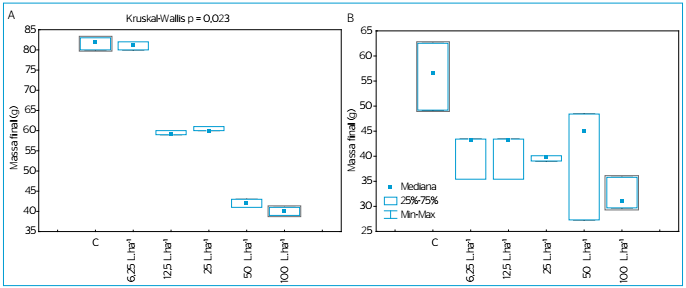ABSTRACT
The possibility of using herbicides in an aquatic ecosystem, to macrophytes control in unbalanced conditions, led to the need for studies that evaluate the concentration of effect that is effective and ecologically balanced, without causing major impacts to the non-target organisms in the aquatic ecosystem. The glyphosate is the active ingredient of some herbicides and it is known for its efficacy due its broad-spectrum and non-selectivity. This study investigated the minor concentration of effect to control Eichhornia crassipes and Salvinia sp., in experiments conducted in triplicate and observed during a period of 20 days after glyphosate application in the concentrations: 6.25, 12.5, 25.0, 50.0 e 100 L.ha-1. It was verified that only the concentration of 100 L.ha-1 had significant difference of effect when compared to the control. The effect at the end of the twentieth day it was superior to 90%, becoming apparent from the tenth day on. It was observed a small difference in sensibility between the evaluated species; however, the concentration of effect was similar. The dose of 100 L.ha-1 prevented the occurrence of regrowth during thirty days, and caused a residual effect in vegetal species inserted in the environment after the herbicide application.
Keywords:
herbicide; macrophyte; effective dose; water body

 Thumbnail
Thumbnail
 Thumbnail
Thumbnail
 Thumbnail
Thumbnail
 Thumbnail
Thumbnail
 Thumbnail
Thumbnail
 Thumbnail
Thumbnail





